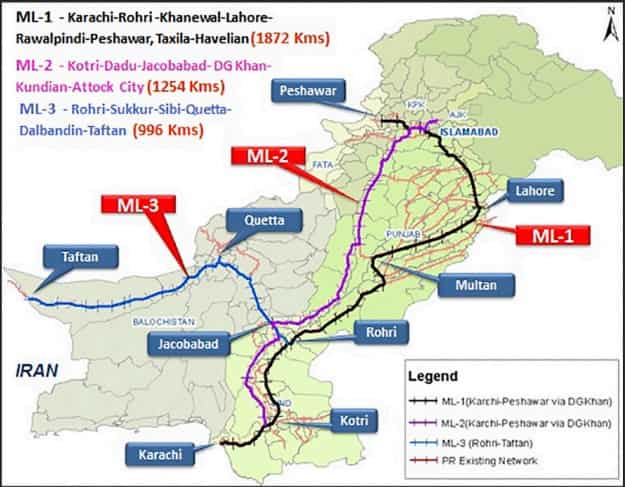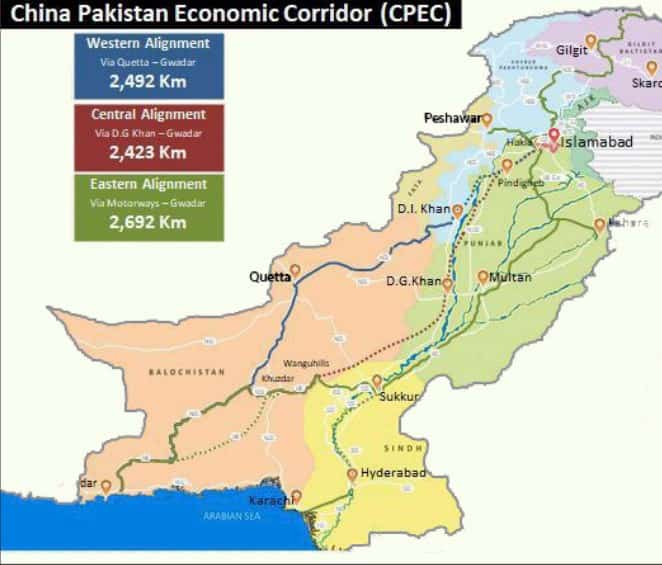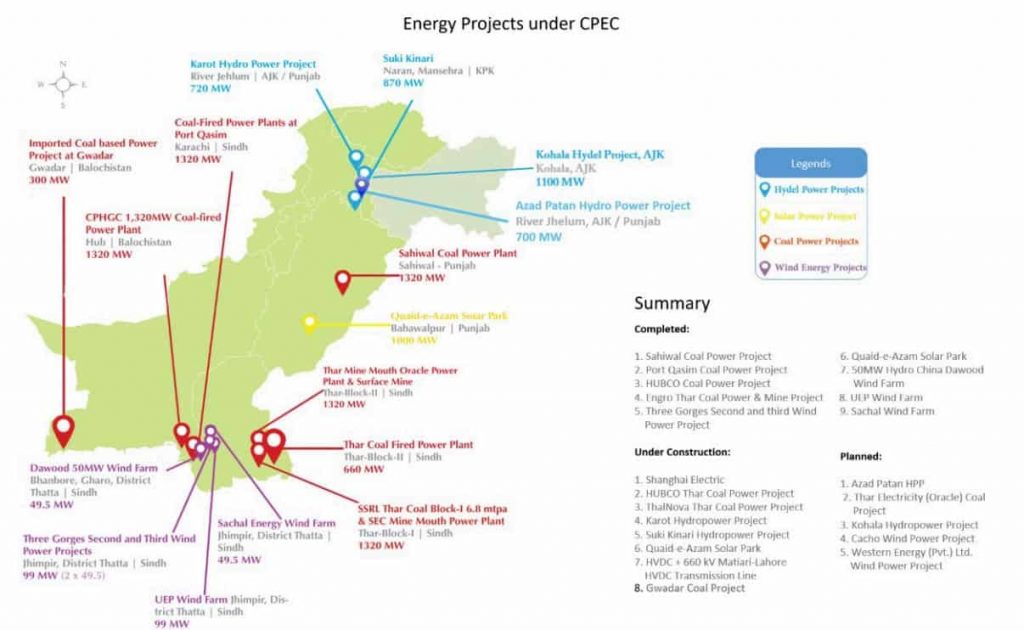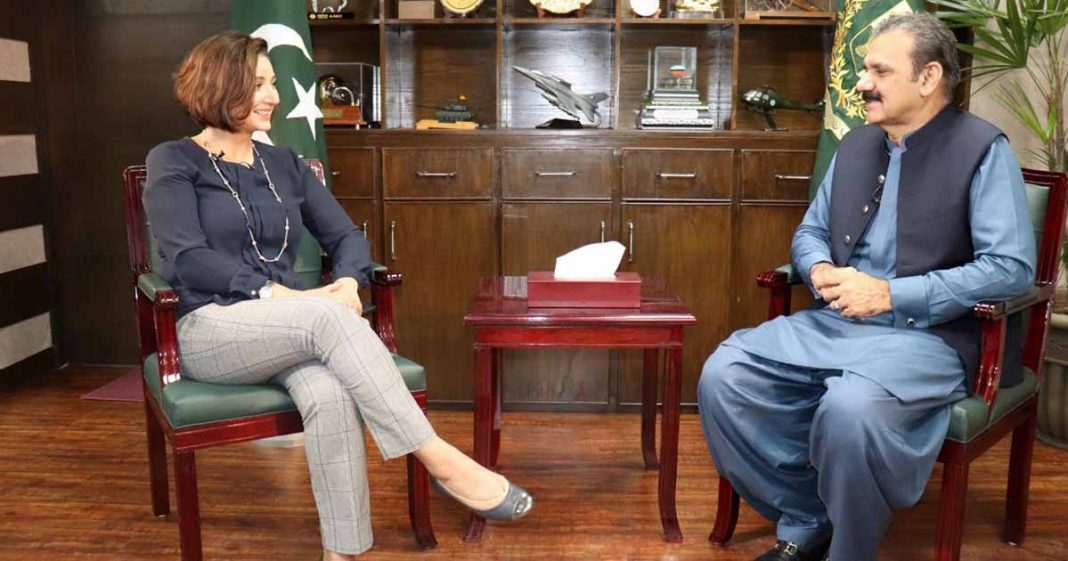Asim Saleem Bajwa, Chairman China-Pakistan Economic Corridor Authority (CPEC Authority) has previously served at the key position of Commander Southern Command and XII Corps based in Quetta, Baluchistan.
It was this experience that brought him to CPEC Authority that has been created to coordinate work between the centre and the provinces. Bajwa had previously served as Director-General of the Inter-Services Public Relations (ISPR), from 2012 to 2016 and was often credited for the reorganization of ISPR into a multi-media organization.
It was perhaps because of this background that in April 2020 he was given the additional task of reorganizing state media as Special Assistant to PM of Pakistan. He graduated from the Command and Staff College in Quetta, as well as the National Defence University (NDU) in Islamabad, followed by the Staff College, Camberley.
He holds master’s degrees in war studies from National Defence University, Islamabad and defence studies from King’s College London. He recently sat down with Najma Minhas, Managing Editor Global Village Space, for an exclusive discussion on the role and challenges of CPEC Authority. Video of this interview is also available on GVS YouTube.
Read more: EXCLUSIVE: Planning minister Asad Umar explains how CPEC focus has shifted
Why do you think there was a need to create the CPEC Authority?
Asim Bajwa: I think, it was out of the experience of the past five years, because the scope of CPEC’s work is expanding, there is so much work that a need for the CPEC Authority was felt. CPEC’s scope is now broader; with many ministries and federating units involved. Therefore the government thought that a one-window operation was required where foreign investors can come and get their job done from one place.
What has happened now after this has been established, every Chinese company and official of the embassy who comes to Pakistan as part of CPEC or is planned for CPEC comes to the authority for their work, and then we have officials who will do the running around, go to ministries, coordinate and get their work done expeditiously.

What is your mandate? Is it to deal with the day to day running of CPEC, or does it also include working on the strategic level decision-making?
Asim Bajwa: Basically, the emphasis of the CPEC authority is more towards the implementation of projects. But, we also do the planning, evaluation and monitoring of the projects. I would like to emphasize, whatever we plan for CPEC, is in consonance, with the overall master planning for the country which is done by the Planning Commission of Pakistan and the Ministry of Planning.
We work very closely with them, being part of the Ministry of Planning, so it becomes very easy for all of us to coordinate, and then we come up with projects, so it is all synchronized and planned in one overall framework. Then we pursue the implementation, and we also monitor them.
You’ve been serving as the CPEC Authority chairman for almost ten months, of course, Corona has hit us during this period, but what do you think is your most significant achievement during this time?
Asim Bajwa: There were so many projects where we had hiccups for years. So, we went to all federating units physically and talked to them about resolving issues. There isn’t any outstanding issue now on projects. But, the most significant success in the last few months is the ML-1 railway line.
All due processes have been completed; evaluations have been done, estimations have been reviewed, it has now come down to almost $6.8 billion. It is a very vital, historic and monumental project in terms of logistics and for infrastructure in Pakistan.
Every business is going to become more viable, as far as freight traffic through railways is concerned, as freight trains will run at a faster speed. It is also going to bring a revolution in passenger movement between Peshawar and Karachi or Karachi and Lahore, the travelling time between Karachi and Lahore will drastically reduce from around 13 hours to 6-7 hours.
Read more: How Punjab is gearing up for CPEC Phase-II, Mian Aslam Iqbal explains
What timeline do you have for its completion?
Asim Bajwa: ML-1 is a huge project – 1870 km, this is divided into phases over a period of 7-9 years, but what I have observed is that many projects in CPEC get done before the deadlines set.
What are the significant achievements CPEC has accomplished so far?
Asim Bajwa: When CPEC started, it started by filling voids both in energy and communication infrastructure. We have made much progress in energy projects and don’t have shortages like we used to. Although, some other issues have started coming up like the power transmission from the newly launched plants. In communication infrastructure, roads and motorways are coming up – but now we have gone for an even smarter financial model in the form of public-private partnerships.
How much investment have we seen so far?
Asim Bajwa: In energy alone, we have about $8 billion already in the commissioned projects. But then we also have another $9.5 billion invested in the projects under execution. When we talk of communication infrastructure, we have $4 billion invested and another $3 billion under execution.

We talk about CPEC as a point in time – but I remember we talked about an economic corridor far back as 2001- 02, is there a history behind the CPEC project?
Asim Bajwa: The history behind it is as old as our relationship with China. We jointly constructed the Karakorum Highway in the 1970s in which Pakistani FWO and Chinese engineers collaborated to connect a road to China. This project (CPEC) is an extension of the KKH. If we look back, there was a movement in the year 2000 and then in 2002.
There was also the Beijing declaration in 2003, then the groundbreaking of Gwadar port and later the connecting with the coastal highway. So it has been coming for a long time, with each government chipping in and now we are at the peak of our engagement with the Chinese and entering phase-II of CPEC
Do we have other projects on the railway front other than ML-1?
Asim Bajwa: ML-1 is on the main railway line that we already have. We have other railway lines also, so they are already being discussed with the railway ministry and the planning commission. We are thinking of connecting Gwadar with Quetta. From Quetta, we already have a railway line up to Rohri, Sukkur. Moreover, we are also planning on upgrading our railway connection with Iran.
Read more: CPEC: Once a game-changer, always a game-changer?
Are these projects under CPEC?
Asim Bajwa: So far, this is all a part of planning. To make a project a part of CPEC; there is a mechanism – everything we want to bring under CPEC is jointly decided by the two countries through the representatives of the two countries in the Joint Coordination Committee (JCC).
We first decide in the Joint Working Groups if a project should be taken up at the JCC level, which is responsible for giving the final approval. Once it is approved there, then the proposed project goes further and enters the financing and execution phase.
How far are we on the Gwadar port and free zone?
Asim Bajwa: Gwadar has been an area of emphasis. There has been significant progress on Gwadar port and Gwadar city itself. Recently, we started the construction of Gwadar International Airport; this is going to be one of the largest airports in Pakistan built by a grant of $230 million.
It is being built given the prospects we see in this area in Gwadar city and the port. We have the Gwadar Free Zone spread over 2400 acres, and there has been much progress in the construction of the free zone, they are building the infrastructure.
Despite Covid-19, we’ve seen the interest of several companies from China, Gulf and western countries in Gwadar Free Zone. Gwadar city’s master plan has been worked out by a Chinese consultant company. Since the Prime Minister and the cabinet have already approved it, now we are ready to launch that master plan.

What does it mean when it’s said that Gwadar will be turned into an oil city?
Asim Bajwa: Well, that’s an area which has been designated for an oil refinery/storage. It is between Gwadar and Pasni, about 30 kilometers outside Gwadar city, along the coastal highway and has access to the sea.
What are the other projects that you are implementing in Balochistan under CPEC?
Asim Bajwa: Baluchistan has always been an area of focus. One is the connectivity to Baluchistan, western route: a road coming from Islamabad to Dera Ismail Khan (DIK). Then there is another road which next month we are taking to the JCC; it is from DIK to Zhob (work expected to start early next year).
There is another road from Zhob to Quetta, which has had its groundbreaking by the PM, money has been allocated, land acquired, and the tender floated and will soon be awarded. So, imagine very soon we will have a road linking Islamabad to Quetta.
When are you going to start CPEC projects in Azad Jammu and Kashmir? You have the Tetra M project – the highway planned from Mangla to Mirpur and then to Muzaffarabad onwards to Mansehra, what is the timeline on that and also the SEZ which is supposed to be set up?
Asim Bajwa: We just concluded two agreements in AJK. One in Kohala, 1120 MW hydel power project and the other in Azad Pattan, which is a 700 MW hydel power project. Both these projects are in AJK then there is another one called Mahal in AJK. These three projects are also carrying out much corporate responsibility for the people in AJK, and generating revenue for the AJK government because of the water usage agreement.
We have the triple M road also in our projects, but first, we will focus on hydel power projects, as the prime minister’s vision is to produce clean and cheap electricity, so we have gone from coal to hydel projects. The agreements done in this regard will bring $4 billion of investment into Pakistan.
Read more: Ghias Khan: Engro’s vision under CPEC for energy & agriculture
The prime minister’s big focus is on creating jobs through industrial development, and to achieve this end SEZs are being developed. But the work on the SEZ front has been prolonged. Why is that so?
Asim Bajwa: Well, I would say that it’s not very slow. We had the groundbreaking of Faisalabad SEZ in January, where the total landmass is around 3,000 acres. About 1,500 acres have already been either committed or sold by various companies, and the development work has begun.
Similarly, we had the development agreement signed between the Khyber Pakhtunkhwa government and a Chinese company, CRBC. The allocations have been made for utilities which is now already in progress. The groundbreaking will be done soon, and it’s a total of 1,000 acres. We are also now almost ready for the Dhabeji project next to Karachi.
Is there a particular reason for prioritising these three SEZs out of the CPEC SEZ’s?
Asim Bajwa: Yes, I would say that it’s because of the potential of these projects. Rashakai SEZ is in KP province. It shows much promise, as it can be linked with Afghanistan, especially in light of the peace process. It will open our access to Central Asia. Then we have one in the centre in Faisalabad.
It has a lot of potential and promise as Faisalabad is a significant industrial city. Then in the Dhabeji SEZ, surprisingly, I have seen maximum promise there because of its close proximity to the port. Hence, not only foreign investors but also local investors expressed their interest in the project.
Read more: Pakistan’s Special Economic Zones: Challenges & Opportunities ahead
The socioeconomic projects and agricultural productivity projects that the prime minister talks about – what is the role the CPEC authority can play in these issues?
Asim Bajwa: We are entering Phase-II of CPEC, which is mass-industrialisation, agriculture, science and technology, IT and socioeconomic development. All these sectors in this phase have a potential employment opportunity for the people of Pakistan. The prime minister always emphasizes on two things.
First, generate local employment so that our people are not required to go abroad. We have a huge youth bulge; we want to utilise them in the country and make them productive. Secondly, he wants prosperity to spread across the masses for common people of Pakistan. CPEC is entirely focused on that in the best interest of the people of Pakistan.


